Timothy Leary taught us that set and setting are critical to determining the shape of any mind-altering experience. Mindset: sleep-deprived after an unfortunate all-nighter at work. Setting: an empty L.A. theater at midnight in the late 1990s, where they are screening the miraculous re-release of Italian director Lucio Fulci’s The Beyond (1981). I fell asleep within minutes. I drifted off in a dark, flooded basement, then woke up in a morgue so white and spare I expected to see Dave Bowman reaching out from his bed to the monolith in 2001. Later, I woke up to the sight of spiders eating an eyeball. Who knew that spiders squeak like gurney wheels and chew so loudly? For years, these images haunted me, and I thought I had slept through the scenes that made sense of it all. Now I know that no such scenes exist and that Fulci, known for his unflinching cinematic violence, reserves his greatest savagery for story logic, and the result is a uniquely disquieting dream that I return to again and again.
Like Mario Bava’s Black Sunday (1960), The Beyond begins with the murder of a witch by angry townsfolk. It is 1927 in New Orleans, and the alleged warlock Schweik is in the middle of an evocative painting that establishes the key of the film: bodies, alone or in groups, in various stages of deliquescence within a gray wasteland. The locals torture and kill him, unaware that he is a sentinel guarding one of the seven doors to hell, which happens to be downstairs in the basement of some river hotel. In 1981, Liza Merrill (Catriona MacColl) inherits the dilapidated Seven Doors Hotel, seizing it as her “last chance” after failing to make it in New York City. Hang on dearly to these early moments of character and motivation. Once Joe the Plumber (Tonino Pulci) investigates the watery basement, and the doorway to hell doesn’t open so much as dissolve into a sickening, excremental sludge, the plot begins its own process of rotting away.
Dream logic as I understand it: you find yourself in a room, in the middle of some unreal space, in the middle of some outlandish action that you simply accept as what’s happening now. Fulci conjures this effect most spectacularly in each of his morgue sequences. Liza’s new friend, local doctor John McCabe (David Warbeck), is ho-humming his way through an autopsy on Joe the Plumber, apparently unfazed by the mutilated, eyeless state of him, and by the waterlogged corpse of Schweik lying on an adjacent stretcher. Characters are so nonchalant about the weirdness that you start to doubt your own sense of reality. I found myself wondering if there really are brainwave machines in morgues that general practitioners like Dr. McCabe begrudgingly allow their assistants to hook up decades-old corpses to. And do they keep open pitchers of corrosive acid on high, unstable shelves? I don’t know! By the time Joe’s young red-haired daughter (Maria Pia Marsala) finds herself trapped in that morgue, every door locked, your brain will be melting along with Joe’s wife when the acid finds her face. You stop asking why when the pink foam of blood and acid creeps in a puddle toward the daughter’s feet in a series of unforgettable shots—your only thought is escape.
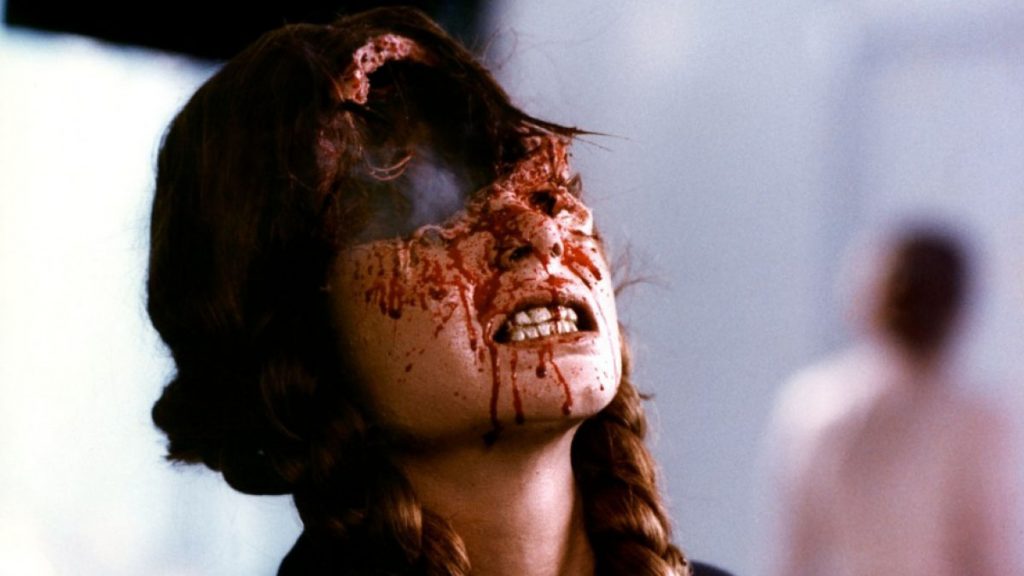
There is a book that explains it all. There’s always a book, and this one is Eibon, a collection of prophecies about the evil beyond the door to hell. Unfortunately, it keeps disappearing. Whenever characters begin to understand the book’s revelations, they are cut off by gore. The obligatory scene in any horror movie is the one at the library where the monster’s lore is established. Fulci mocks the very notion when he has one of his characters immobilized on the library floor—meat for spiders after discovering a secret map of the hotel. He teases an exposition that never arrives, creating an impression that there is a logic to the horror, but it isn’t for us to understand. Flesh is what we understand, and the director takes great pains to depict its jabbing, rending, and disintegration in long, unspeakably gruesome sequences. So grim are the images that they obliterate any possibility of a satisfactory explanation.
We must mention Emily (Cinzia Moscone), the film’s most iconic character, a white-eyed blind woman led by her faithful German Shepherd. Her appearance coincides with the opening of the gate to hell. One of my favorite shot transitions in horror history is the cut from Joe the Plumber’s eyeball-gouging to the Lake Pontchartrain Causeway in Louisiana, as Liza’s car barrels toward the camera. Reverse shot on Emily, standing in the middle of the road, tiny in the distance like a single stitch between lake and sky. In an otherwise claustrophobic film, this infinite horizon, like the painting’s endless hellscape, hits us with a sense of vertigo. It initiates a gradual warping of geography in the film that culminates in a kind of locational Möbius strip during the film’s final moments. This is true cosmic horror, the feeling that the basement corner hides a void where malevolent forces are waiting. Cat’s paw or victim of these forces, Emily will do anything not to return to that place. She is a stand-in for all of humanity when she screams at the air or at the one who commands her fate, “I did what I’d been asked!” And for that, she earns betrayal by a best friend, as she huddles in a fearful corner, ignorant and incarnate for an instant, bracketed by wastelands.
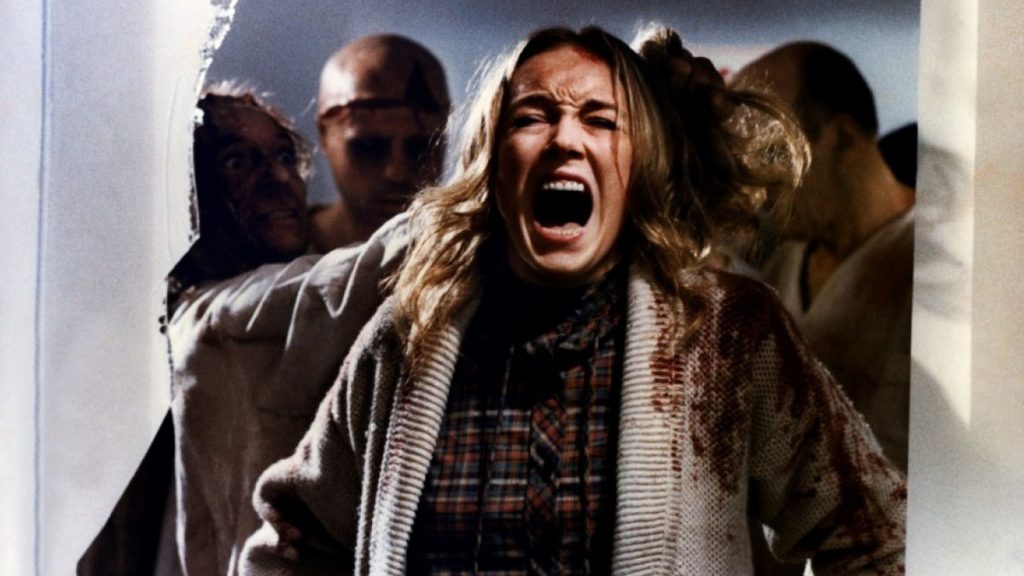
a writer living outside Philadelphia, is currently working on a horror project set in western Pennsylvania. He co-wrote the movie Anamorph, starring Willem Dafoe.
The cold open to Messiah of Evil (1973) promises first-rate grindhouse, grimy as you like: a man running for his life down a suburban sidewalk collapses outside a wooden gate.
BY TOM PHELAN | October 31, 2024
It’s so strange that Dario Argento’s 1996 movie called The Stendhal Syndrome is really about post-traumatic stress disorder when nearly all of his classics somehow involve Stendhal syndrome.
BY LAURA WYNNE | December 27, 2024
Directors love Magritte. William Friedkin modeled the iconic Exorcist streetlight image after the painting Empire of Light.
BY LAURA WYNNE | October 17, 2024
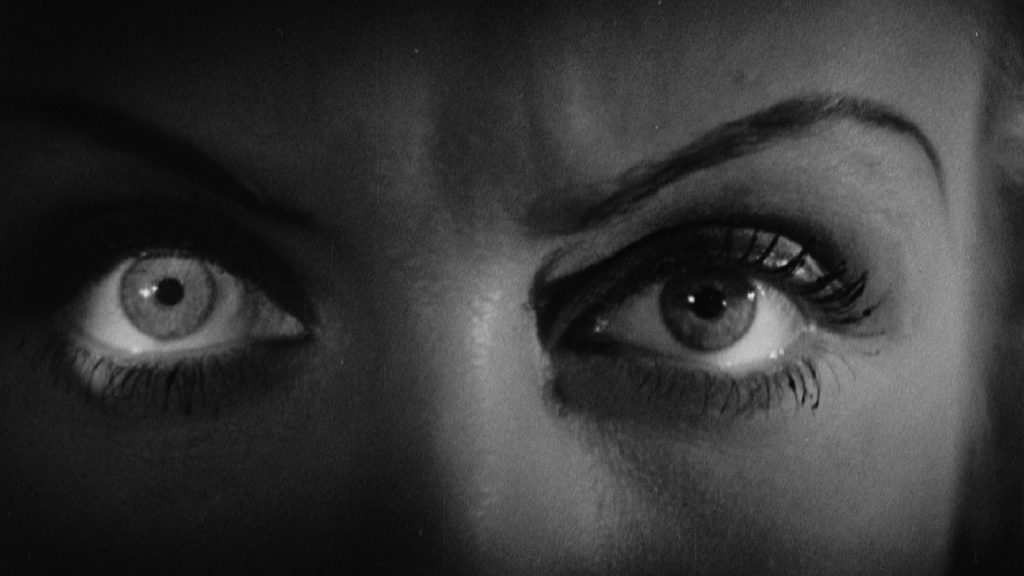
This pre-Code offering packs a lot of story into its typically brisk running time, with several plot threads weaving together a (not always successful) tapestry of spooky and criminal doings.
READ MORE >
BY ANN OLSSON | Month 00, 2021
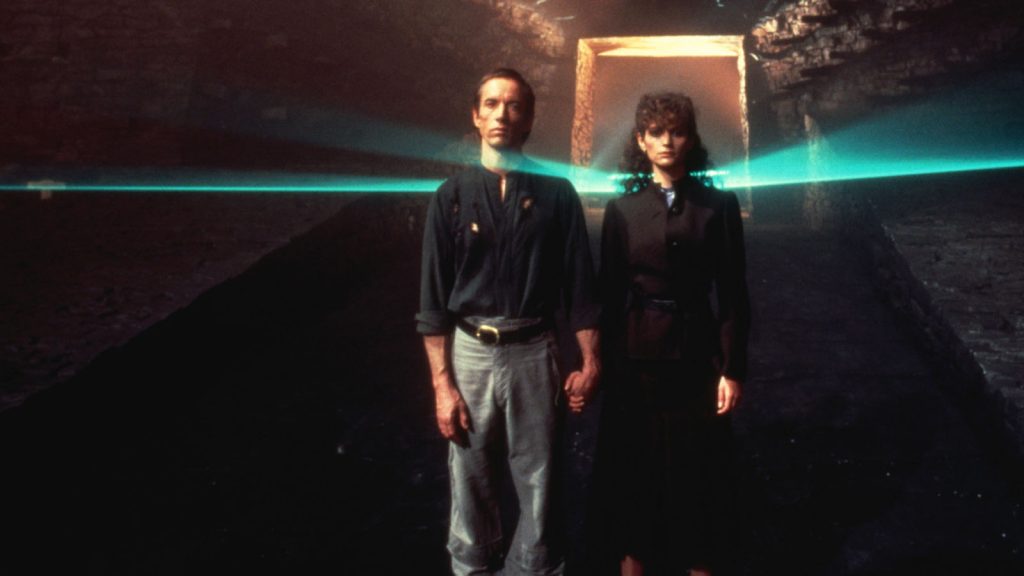
In what could be the fastest-resulting rape revenge movie, a drunken lout brutally forces himself on Ida, the young woman who doesn't return his affections, during a party over Labor Day.
READ MORE >
BY LAURA KERN | Month 00, 2021
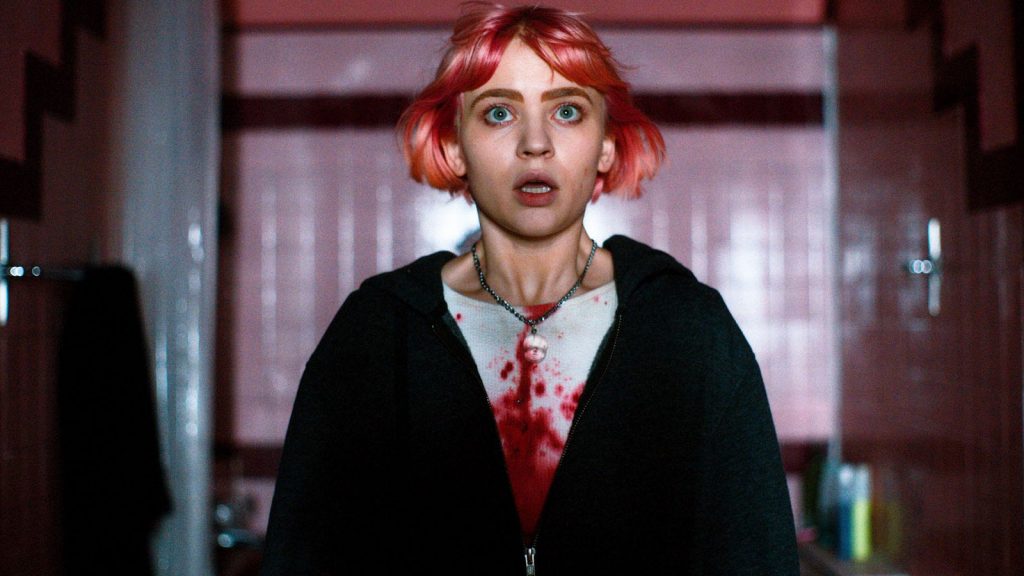
Beast is a lot of movies in one package - fractured fairy tale, belated-coming-of-age story, psychological drama, regional horror film - but above all it's a calling card for its leading lady, Jessie Buckley.
READ MORE >
BY LAURA KERN | Month 00, 2021